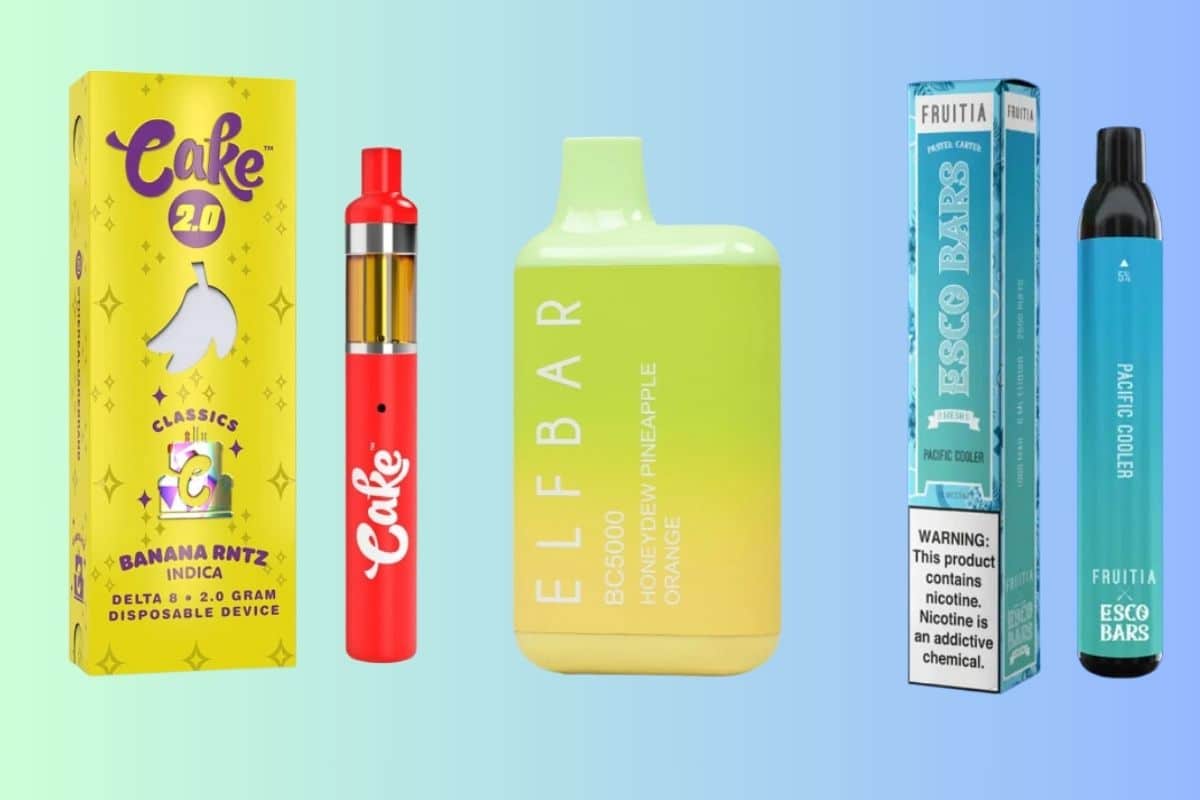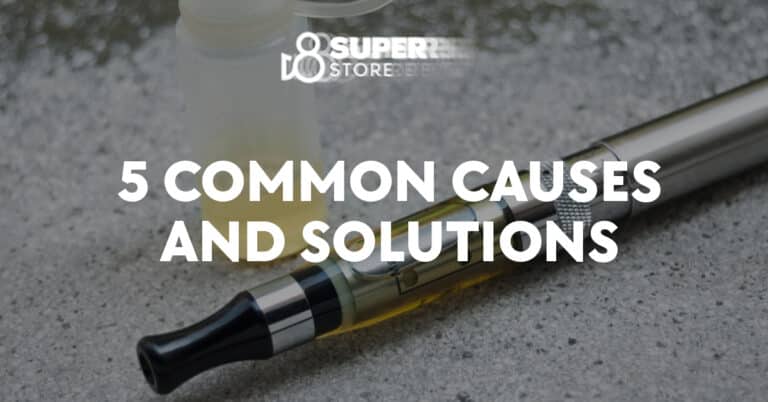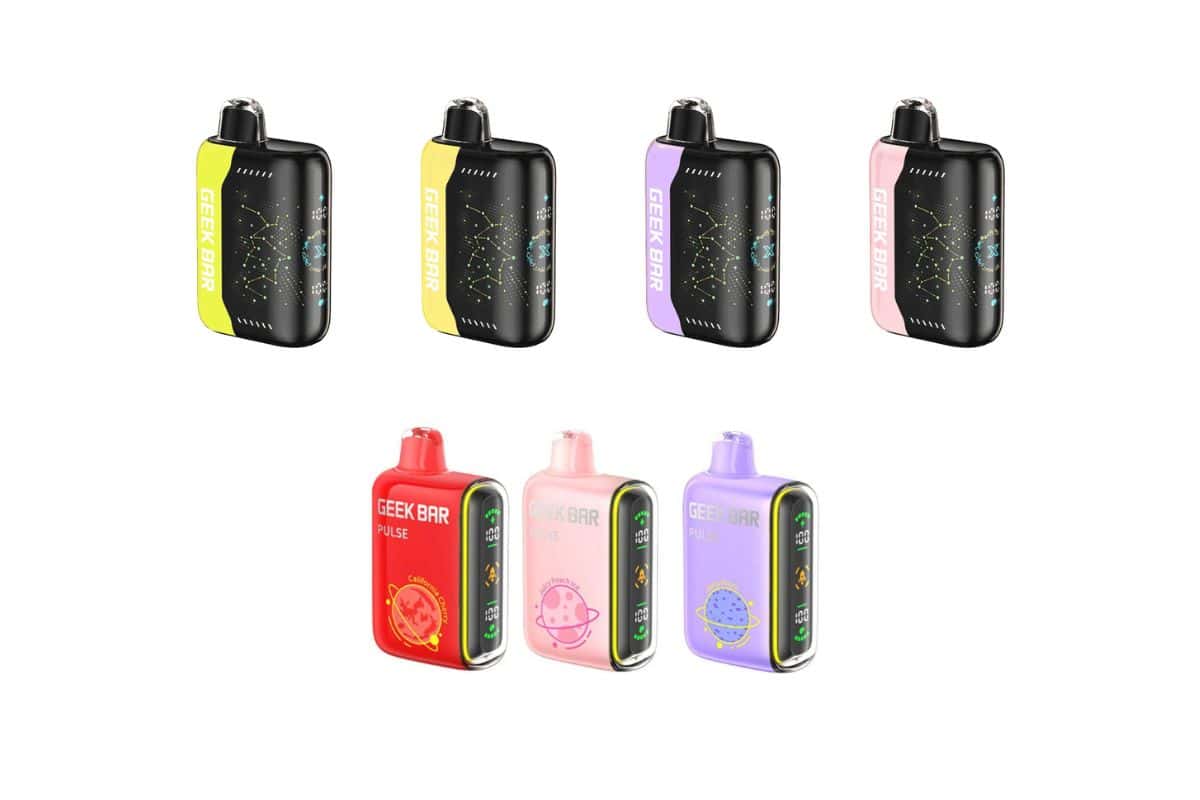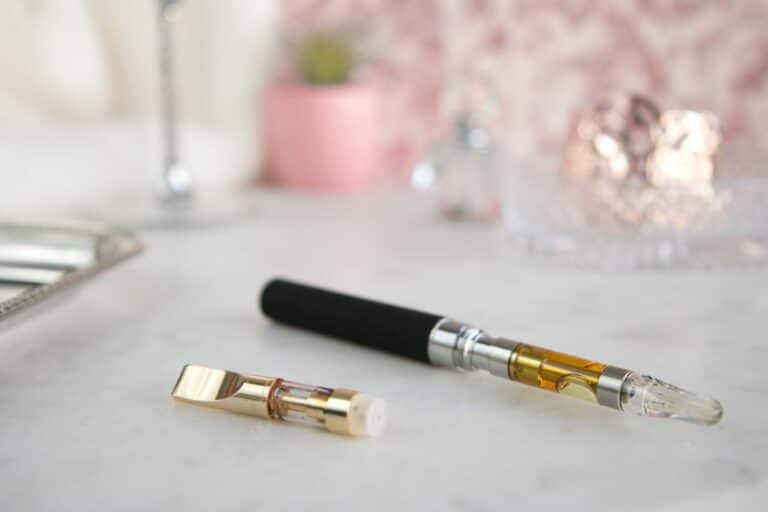Healthiest Vapes: Uncovering the Safest Options for E-Cigarette Users
Vaping burst onto the scene, giving traditional smoking a run for its money and serving up a new way for folks to kiss nicotine goodbye or delight in scrumptious clouds minus the nasty ingredients found in old-school cigarettes. Finding the right gadget is a big deal for anyone mindful of their health because not all vapes play nice with your lungs. I scoured through heaps of vaping devices to pinpoint the ones that are gentler, ditching the harmful ones. Imagine uncovering which vapes are actually kind to your body; that’s the golden nugget you’ll discover here. Your curiosity rewards you with the lowdown on the cleanest vaping options, making this a piece you’ll regret skipping.
Table of contents
In my exploration, I have looked into vapes that contain carefully selected ingredients and innovative features aimed at improving safety. For instance, certain products now boast a robust blend of cannabinoids without nicotine, offering a potentially less harmful experience for those who partake. Furthermore, the marketplace has seen the introduction of devices designed for specific needs, such as energy-boosting vapes that substitute nicotine with caffeine and other health-oriented features. It’s key to understand that while vaping is generally considered less harmful than smoking, it does carry its own risks, and the long-term effects are still being studied.
The quest for the healthiest vapes appears to be an ongoing journey as manufacturers continue to innovate and respond to the concerns of health-conscious consumers. Still, it is up to you, the consumer, to stay informed about the latest developments and to choose your vaping products wisely. Keep in mind that product safety does not rely solely on the absence of nicotine, but also on the quality and transparency of ingredients used. Remember, the goal is not to find a risk-free option—because as of my knowledge cutoff in early 2023, one does not exist—but rather to select the most responsible product available that aligns with your personal health standards.
Understanding Vaping and Health
In this examination of vaping, I’ll explore what it entails, its risks and benefits compared to smoking, and the health concerns it raises. My goal is to present clear and precise information to foster a deeper understanding of vaping’s role in health.
What Is Vaping?
Vaping involves inhaling an aerosol produced by an electronic device, often known as an e-cigarette. These devices heat a liquid containing nicotine, flavorings, and other chemicals to create vapor, which users inhale. Unlike traditional cigarette smoking, there is no combustion and consequently no smoke is produced.
Vaping vs. Smoking
Although both vaping and smoking deliver nicotine, the methods differ significantly. Smoking involves the combustion of tobacco, which releases thousands of chemicals, many of which are harmful and at least 70 known to cause cancer. Vaping, on the other hand, heats a liquid and avoids combustion. This is a crucial difference, as it is the combustion in smoking that releases the majority of toxicants, including tar, a substance directly linked to lung disease and cancer.
Health Benefits of Vaping Over Smoking
Using e-cigarettes, or vaping, is considered a less harmful alternative to smoking for those looking to reduce their exposure to toxic and carcinogenic compounds. For individuals struggling with smoking cessation, e-cigarettes might serve as a transition tool due to their ability to deliver nicotine without many of the harmful combustion products found in tobacco smoke. Some research has pointed out potential reduced risks of cancer and heart and lung disease for long-term smokers who switch to vaping.
Health Risks Associated with Vaping
While vaping may contain fewer toxic substances compared to smoking, it is by no means risk-free. E-cigarettes expose users to several harmful chemicals that could contribute to respiratory problems and cardiovascular issues. Nicotine, the addictive substance in both e-cigarettes and traditional cigarettes, can impair adolescent brain development. Furthermore, there is emerging evidence that vaping could be associated with an increased risk of lung disease and other health issues, though more research is needed to fully understand these effects.
Types of Vapes and E-Cigarettes
In my examination of vaping devices, I categorize them based on their design, usage, and refill capabilities. Here are the main types you’ll come across:
Disposable Vapes
Disposable vapes are known for their convenience and are typically used until the e-liquid runs out, at which point the entire unit is disposed of. These devices come pre-filled with vape juice, often containing nicotine, and are ready to use right out of the box. They don’t require recharging or refilling, which makes them a popular choice for occasional users or those new to vaping.
Vape Pens and Pod Systems
Vape pens are slim, pen-shaped devices that include a rechargeable battery and a refillable tank for vape juice. They are a step up in complexity from disposables. Pod systems, on the other hand, are compact and often use pre-filled or refillable pods, making them convenient for daily use. Both types of devices provide a balance between the simplicity of disposables and the customization offered by more advanced vaping systems.
Refillable Tanks
Advanced users often prefer refillable tanks, known as clearomizers or glassomizers, due to their versatility and the control they offer over the vaping experience. I can choose from a variety of e-liquids to fill my tank, adjust the power settings, and replace the coils to suit my vaping preferences. Tanks require regular maintenance, including cleaning and coil replacement, but offer a more cost-effective and environmentally friendly solution compared to disposables.
Nicotine Content and Addictiveness

I will discuss how nicotine levels vary across different vaping products and the implications this has for addiction potential, providing clear insights into nicotine strengths and the difference between nicotine-containing and nicotine-free vapes.
Understanding Nicotine Strengths
When examining nicotine vape products, it’s essential to understand that nicotine strength is measured in milligrams per milliliter (mg/mL). Personal preference plays a significant role in choosing the appropriate strength. Most e-liquid products offer a range of nicotine concentrations, typically from 0 mg/mL to high strengths that can reach over 50 mg/mL in some “pod mod” devices. For instance, a disposable nicotine vape might offer several strength options tailored to mimic the nicotine delivery of traditional cigarettes.
Nicotine vs. Non-Nicotine Vapes
Nicotine vapes: They contain varying levels of nicotine, providing a similar hit to traditional smoking which appeals to users transitioning from smoking to vaping. Non-nicotine vapes: Often labeled as zero-nicotine or nicotine-free, these vapes deliver the sensory aspects of vaping, such as flavor and vapor production, without the addictive substance.
| Type | Presence of Nicotine | Potential for Addiction |
| Nicotine Vapes | Yes | Higher |
| Non-Nicotine Vapes | No | Lower |
For users conscious about addiction or those using vapes to wean off nicotine, non-nicotine vapes are a considered choice, as they don’t have the addictive agent found in traditional and nicotine-based e-cigarettes.
Nicotine Addiction and Vaping
My research indicates that the risk of nicotine addiction is real when using nicotine-containing vapes. This is due to nicotine’s highly addictive properties, corresponding to the level of concentration present in the e-juice. Some vaping devices offer nicotine concentrations that exceed typical free-base nicotine levels, potentially elevating the risk for quicker and stronger addiction. For individuals concerned about addiction, various alternatives exist, such as nicotine patches or lower concentration e-liquids, aimed at reducing dependence while still satisfying the craving to vape.
Ingredients and Safety
| Ingredient | Description |
|---|---|
| Propylene Glycol (PG) | A synthetic liquid used as a base and carrier for flavorings and nicotine. |
| Vegetable Glycerin (VG) | A natural liquid derived from vegetables, providing vapor and sweetness. |
| Nicotine | A stimulant found in tobacco plants, added to provide the desired nicotine hit. |
| Flavorings | Various artificial or natural flavorings to create different vape juice flavors. |
| Distilled Water | Used to dilute the mixture and adjust viscosity. |
| Ethanol | Sometimes used as a solvent or to adjust the consistency of the vape juice. |
| Sweeteners | Optional additives for sweetness, including sucralose or ethyl maltol. |
| Preservatives | Additives to prolong shelf life and prevent spoilage. |
In my investigation of the healthiest vapes, it’s crucial to scrutinize what goes into e-liquids and how safety is assessed. Understanding the ingredients and their potential effects is fundamental to determining the relative healthiness of vaping products.
Common E-Liquid Components
My research indicates that e-liquids typically consist of a base, nicotine (optional), and flavorings. The base is usually a mixture of glycerin and propylene glycol, both of which create the vapor when heated. While these are considered generally safe for consumption by the FDA, their effects when inhaled over the long term remain a topic of discussion in the scientific community.
- Glycerin (VG): A viscous liquid often used to produce thicker vapor.
- Propylene Glycol (PG): Used to carry flavors more effectively and for throat hit simulation.
Flavorings are added to make the experience more enjoyable. I’ve learned that these can range widely, with some being better studied for safety than others.
Potential Toxins and Chemicals

It’s important for me to note certain chemicals that have raised health concerns. For example:
- Diacetyl: Once a common flavoring for its buttery taste, diacetyl has been linked to serious lung diseases when inhaled.
- Vitamin E Acetate: Often associated with THC vaping products, this oil has been strongly linked to the condition known as EVALI (e-cigarette, or vaping, product use-associated lung injury).
I make it a point to look for products that clearly state they are free from such substances. Ensuring minimal exposure to harmful contaminants is a key factor in choosing the healthiest vapes.
Role of the FDA in Regulating Vaping
The FDA, or Food and Drug Administration, oversees the regulation of tobacco products, including e-cigarettes. This agency is responsible for:
- Reviewing product ingredients and packaging: Ensuring labels correctly display what’s inside.
- Setting safety standards: To protect public health.
While FDA regulation does not guarantee a product is free from harm, it does serve as an important filter for flagging potentially dangerous products and ingredients. I rely on their oversight as part of my criteria for safety in vaping.
By staying informed about the ingredients used in vape products and the existing regulations, I guide my choices towards safer vaping experiences. The exploration of the healthiest vapes is an ongoing process, as new research and regulations continually shape the marketplace.
Benefits of Specific Vape Features
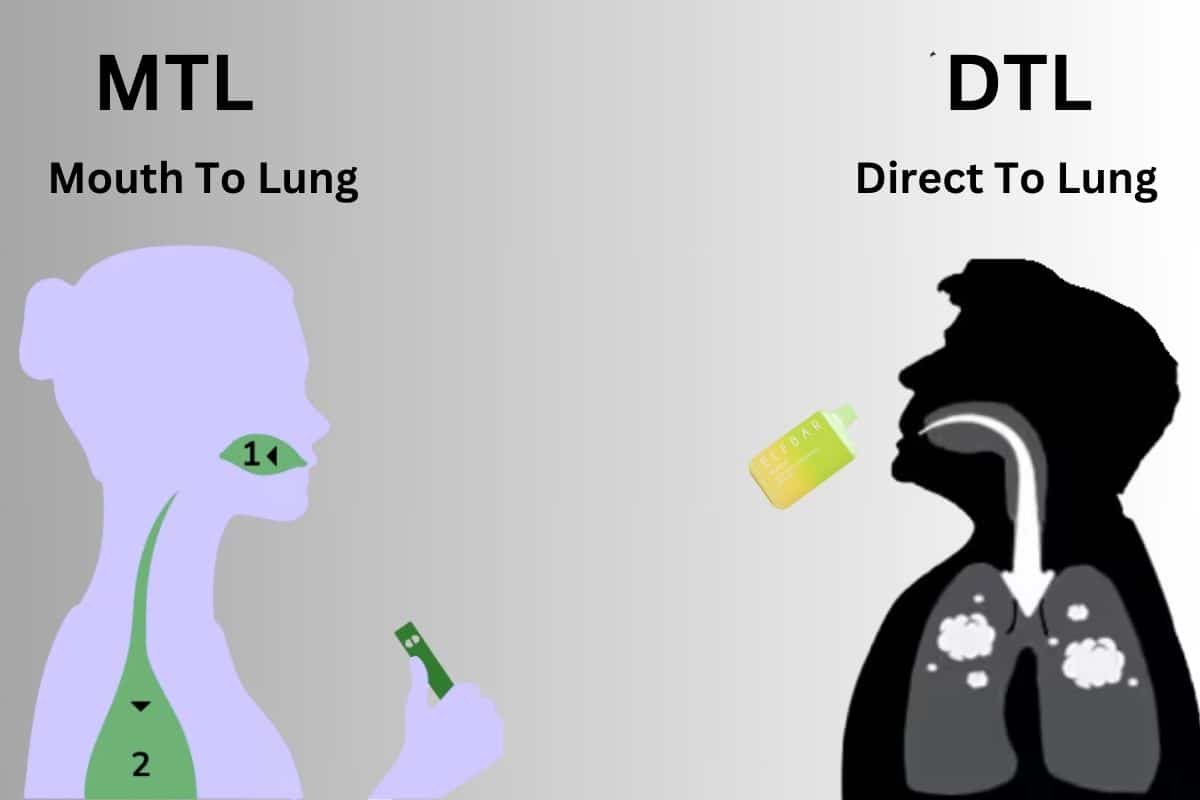
When I consider the healthiest vaping options, features like adjustable airflow and power, design customization, and e-liquid flavor preferences are significant. These features not only enhance the user experience but can also contribute to a safer vaping session by providing better control over the device’s performance and output.
Adjustable Airflow and Power
My experience suggests that adjustable airflow systems enable me to fine-tune my vape’s draw resistance. Adjustability in this aspect allows for a smoother or tighter draw, aligning with my personal inhalation preference. This feature is essential for those looking for either a direct-to-lung (DTL) or mouth-to-lung (MTL) vaping style.
Additionally, adjustable power settings play a pivotal role in vaping experience. By controlling the power, I can manage the temperature and vapor production, which directly impacts the purity and flavor of the e-liquid. High power usually transforms into larger clouds, while lower power settings can be perfect for those seeking a discreet vape with less vapor. The ability to adjust power is integral for preventing dry hits and ensures the longevity of coils.
Vape Design and Customization
Vape design and customization options reflect my personal style and offer benefits beyond aesthetics. Smaller, more discreet vape pens cater to my preference for portability and ease of use. Larger devices might offer more power or battery life but can be less convenient to carry.
Customization extends to colors and styles, allowing for a personalized appearance that can complement my lifestyle. Customization also includes selecting devices with features like OLED displays for better monitoring of settings and remaining battery life. This combination of design and functionality establishes a reliable performance that suits my specific needs.
E-Liquid Flavors Preferences
The choice of e-liquid flavors significantly influences my vaping experience. With countless options on the market, I prioritize flavors that offer a refreshing sensation or cater to heavy palates. E-liquid manufacturers now ensure a vast spectrum of flavors from sweet, fruity varieties to classic tobacco and menthol profiles.
The ability to choose e-liquids with various nicotine strengths, including nicotine-free options, enables me to customize the intensity of my vaping sessions. Some brands offer e-liquids that aim to tailor the experience to personal perfection, promising authentic tastes and enhanced satisfaction. The preference for specific e-liquid flavors is subjective, but the quality and purity of the flavors are quintessential for a pleasurable and possibly healthier vaping experience.
Health Considerations and Alternatives

In exploring the healthiest options for vaping, it’s important to consider the potential impacts on cardiovascular and respiratory health, and to be aware of viable non-nicotine alternatives.
Impact on Blood Pressure and Heart Rate
When I consider the effects of vaping on blood pressure and heart rate, I focus on the active ingredients typically found in vape juices. Nicotine is a stimulant known to potentially increase both blood pressure and heart rate, posing risks to cardiovascular health. On the other hand, non-nicotine vapes, which might contain ingredients like caffeine or essential oils, could still impact these parameters, as caffeine similarly elevates heart rate and blood pressure.
Vaping and Respiratory Health
Vaping’s impact on respiratory health is a significant concern of mine. While vapes are often marketed as a safer alternative to traditional smoking, the inhalation of aerosols can lead to a range of respiratory issues. This can include coughing, heightened anxiety, and in some cases, lung injury. A focus on products that avoid harmful ingredients and adhere to safety standards is crucial when looking for the safest options.
Alternatives to Nicotine Vaping
For those seeking alternatives to nicotine vaping, I consider several options:
- Non-nicotine vapes: These typically comprise flavors and can contain a variety of substances like vitamins or essential oils, aiming to provide a safer experience.
- Patches: Nicotine patches are a well-known method to aid in quitting smoking, allowing for controlled doses of nicotine without the act of inhaling.
- Supplements: Certain supplements can aid in reducing nicotine cravings and managing withdrawal symptoms.
- Energy alternatives: For those using vaping as a means of maintaining energy levels, safer sources include caffeine, though moderation is key to avoid adverse cardiovascular effects.
Each of these alternatives has its own merits and should be evaluated based on individual health goals and concerns.
Advanced Topics and Consumer Considerations
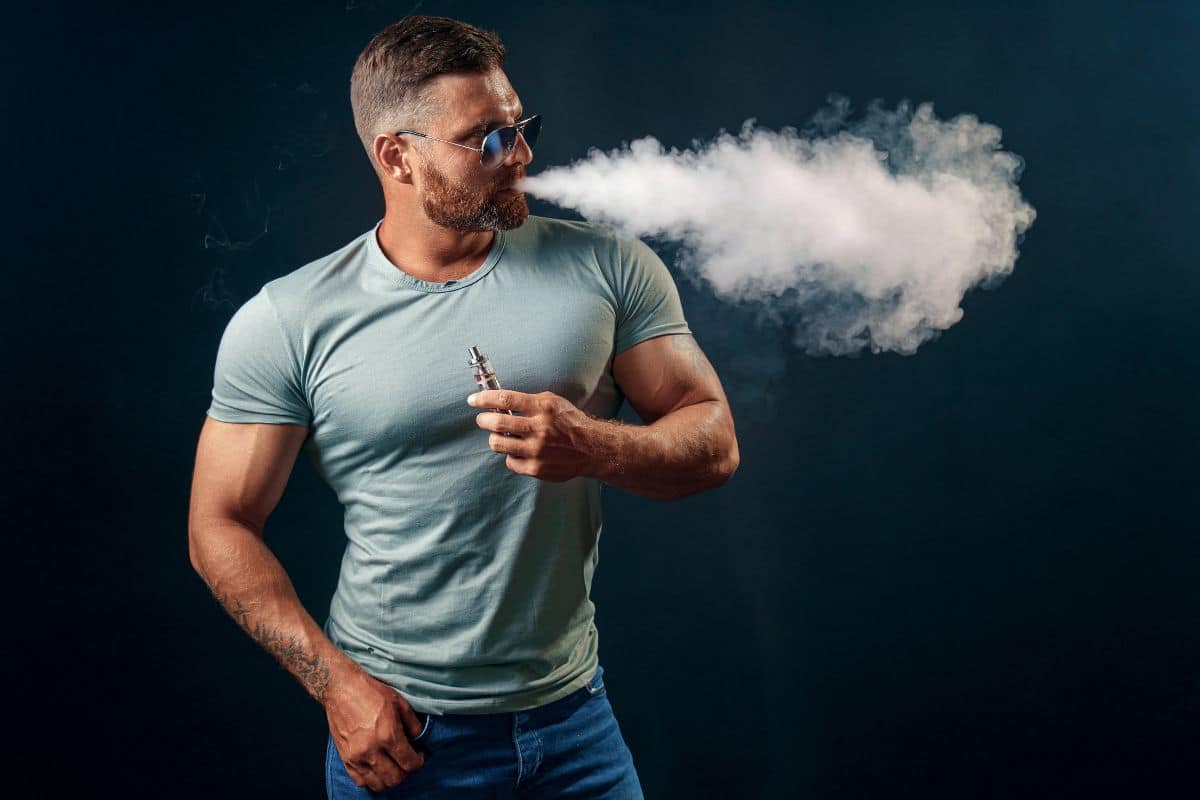
In exploring the advanced aspects of vaping, I prioritize understanding the impacts on health, the role of vaping in smoking cessation, the criteria for choosing the safest products, and the specifics of vaping cannabis products like CBD and THC.
Long-Term Effects of Vaping
While the long-term effects of vaping are still under extensive study by scientists, early indications suggest that vaping can pose health risks, particularly when products contain nicotine. Non-nicotine options like Melo and ELF BAR have been suggested for those seeking flavor without the addictive substance. However, the safest vape experience is one that minimizes exposure to potential carcinogens and other harmful substances found in both nicotine and non-nicotine products.
Vaping as a Smoking Cessation Tool
Vaping has been posited as a tool to help individuals quit smoking. Products such as those by Vaporesso are designed to satisfy the oral fixation without the carbon monoxide and secondhand smoke associated with traditional cigarettes. Yet, addiction to nicotine can still persist, and the effectiveness of vaping as a cessation method varies from person to person.
Choosing the Safest Vape
To select the safest vape, I look for options that:
- Provide transparent ingredient lists
- Avoid using known harmful substances
- Have undergone rigorous safety testing
Models like the HELO Air, which include enhancements for energy or focus, such as added melatonin or chamomile, are increasingly popular. When considering these options, it’s crucial to evaluate their safety profile based on available scientific evidence.
Vaping Cannabis: CBD and THC
Vaping cannabis products like CBD pens and vapes can offer the potential for relaxation or medical benefits. CBD vapes tend to focus on wellness without the psychoactive effects of THC. However, when it comes to vaporizing cannabis, it’s vital to understand the purity of the product to avoid unintended intake of harmful substances. Current market options such as Tribe Tokes CBD All-In-One prioritize product safety.
Frequently Asked Questions
I’ve compiled some of the most common inquiries regarding the safest vape options available, based on reputable sources and research findings.
What are the most reputable vape brands in the USA known for safety?
In the USA, certain brands are recognized for their commitment to safety. Brands like Kado Bar and RAZ have developed reputations for providing safer vaping experiences, often featuring clear ingredient lists and compliance with regulatory standards.
Which disposable vapes are considered the safest health-wise?
The Kado Bar BR5000 series, including Clear and Clear II models, and the Miami Mint RAZ CA6000 stand out for their safety profiles. These disposables are rated highly for balancing flavor experience with reduced harmful ingredients.
How can one identify vape options that are least harmful to the lungs?
To identify the least harmful vape options, I look for products with fewer additives and lower levels of nicotine. Vapes that use high-quality ingredients and transparently list their contents can be considered safer for lung health.
What are some safer alternatives to traditional vaping?
Safer alternatives to traditional vaping include zero nicotine e-liquids and those that feature natural ingredients. Some users also choose systems that allow adjustable nicotine levels to help manage intake.
Which vape juices contain nicotine yet are rated as safer or healthier?
Vape juices like the Dragon Fruit Lemonade RAZ CA6000 Zero Nicotine are considered safer despite containing nicotine. They allow users to enjoy the flavor without additive chemicals typically associated with traditional tobacco products.
Are there any vape flavors identified as safe by health professionals or regulatory bodies?
While no vape flavors are endorsed as “safe” by health professionals or regulatory bodies due to the inherent risks of vaping, products that avoid certain harmful chemicals and adhere to manufacturing standards are generally regarded as better options.


